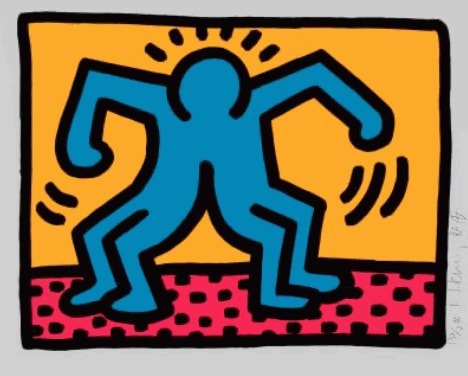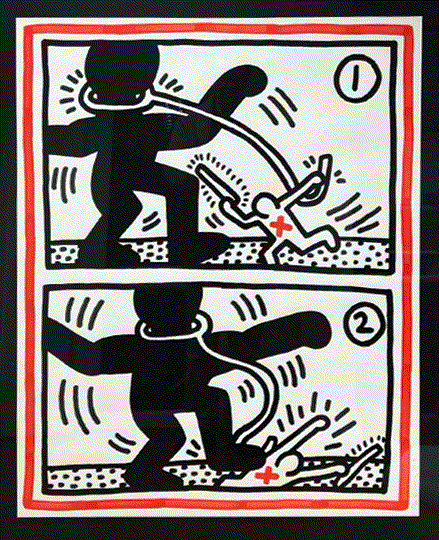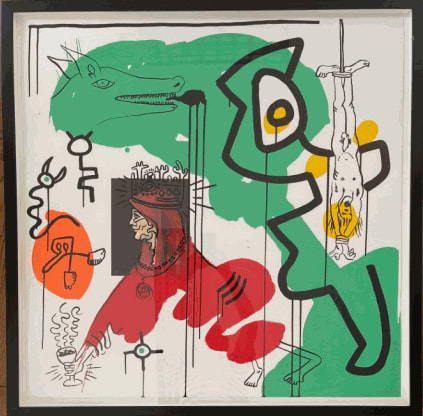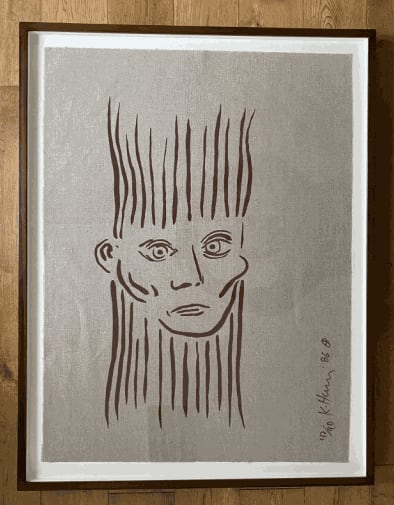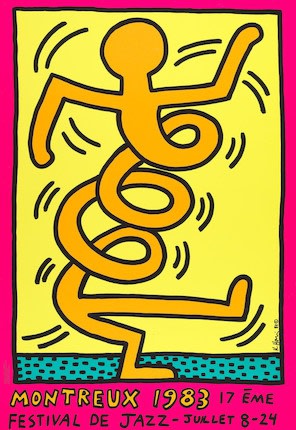This week I am very pleased to put the spotlight on the stunning selection of Keith Haring's work we now have available online and in our galleries.
Please see below for a few of the standout pieces, and get in touch if any of these works interest you.
Many of the works seen below are featured in our Pop Art exhibition currently showing at our Bristol gallery - definitely pop in if you are in town!
Any questions? We are happy to help. Call: 0117 279 6402 or send us a message now.
Keith Haring, Pop Shop II, 1988
Keith Haring’s Pop Shops were born out of the artist’s desire to make his whimsical aesthetic accessible to the widest audience possible. “I wanted it to be a place where, yes, not only collectors could come, but also kids from the Bronx,” Haring said of the Pop Shops.
The street artist opened two Pop Shops—one in Manhattan in 1986 and another in Tokyo in 1987—where art, clothes, posters, other ephemera, and drawings by peers like Jean-Michel Basquiat could be purchased at affordable prices. Haring painted floor to ceiling murals at both boutiques, creating an immersive environment for visitors to browse and enjoy his beloved art.
Today, Haring enthusiasts make the pilgrimage to see the original New York Pop Shop ceiling installed in the entryway of the New York Historical Society.
Keith Haring, Untitled 3 from Free South Africa, 1985
Part of a series of 3 lithographs showing the struggle between white and black in South Africa. Keith Haring, was a dedicated social activist. He vigorously advocated for the LGBT community, particularly those diagnosed with HIV/AIDS, and condemned racism, inequity, and social injustices.
Haring, therefore, found himself joining the international anti-apartheid movement against the oppressive and racially based power of the South African government. Haring wrote that “Control is evil. All stories of white men's ‘expansion’ and ‘colonisation’ and ‘domination’ are filled with horrific details of the abuse of power and the misuse of people,” in a journal entry from March 28, 1987.
His poster Free South Africa originated from a painting in 1984 of the same design (currently exhibited at the Stedelijk Museum in Amsterdam). In 1985, he transformed the painting into lithograph and added the text “Free South Africa” to the lower border of the composition. It is said that Haring distributed around 20,000 poster versions of this print in New York City in 1986 in an effort to mobilise support against the apartheid.
Keith Haring, Apocalypse 9, 1988
Haring's art and life typified youthful exuberance and fearlessness. While seemingly playful and transparent, Haring dealt with weighty subjects such as death, sex and war, enabling subtle and multiple interpretations.
This is part of a suite of 10 silkscreen prints. When the artist was diagnosed with AIDS in 1988, he collaborated with The “Beat Era” poet and novelist, William S. Burroughs on this Apocalypse series, which offers an insight into Haring’s personal struggle with the disease. Whilst a student at the School of Visual Arts, Haring came across the “Beat poets” at the 1978 Nova Convention and had been inspired by Burroughs’ methods of breaking down language ever since.
As with much of his other works, Haring adopts a system of expression inspired by Egyptian hieroglyphics in this series, that repeats and appropriates a set of motifs to create a memorable pictorial language. Haring’s prints represent disjointed, violent and at times perplexing episodes that imagine the horrors of Armageddon reflecting the turbulence in his own life which, just 2 years later resulted in his own premature death.
Keith Haring, Portrait of Joseph Beuys , 1986
The edition is a part of a portfolio of 28 mixed-media prints, one object and one record, made by 30 different artists, to commemorate Joseph Beuys death in 1986. Bernd Klüser and Jörg Schellmann - who had worked with Beuys on exhibitions, books, and editions since 1969 - jointly published the portfolio to honour this outstanding artist who had been of crucial artistic and personal influence to both partners.
Invited to participate in this project were artists who had set a mark in the recent years and whom Bernd Klüser or Jörg Schellmann had worked with on shows or editions. Joseph Beuys (1921 - 1986) was a German Flexus, happening and performance artist as well as a painter, sculptor, medalist and graphic artist. His extensive work is grounded in concepts of humanism, social philosophy and anthroposophy. It culminates in his "extended definition of art" and the idea of social sculpture as a gesamtkustwerk , for which he claimed a creative, participatory role in shaping society and politics. He is regarded by many as one of the most important 20th century artists
Keith Haring, Montreux Jazz Festival (Prestel 8), 1983
The first official exhibition of Keith Haring’s work was held in 1982 at the Tony Shafrazi Gallery in New York, and was hugely successful. Pierre Keller met Haring a few months later and asked him to produce a Festival poster featuring a dancing figure. Haring came up with three designs, all of which were accepted. Keller and Nobs had the brainwave of inviting the New York artist to Montreux. As always, Haring painted constantly, producing murals on large blank panels on stage with the musicians and in the streets of Montreux.
Many of the leading 20th century artists enjoyed designing their own exhibition posters, often in the form of original screen prints and lithographs printed by some of the great Parisian print ateliers, such as the Mourlot Frères studio. Limited edition prints by the same world-renowned artists can often fetch around 10 times the price, making posters an incredibly affordable way of owning an original slice of art history.
Posters designed to advertise galleries and exhibitions are ephemeral and mint copies are rare - as they were by nature, not intended to be kept forever. In the circumstances when only a few visitors recognized their aesthetic or cultural importance and held onto them, we and therefore you, the customer/collector get a rare opportunity to acquire special works that document pivotal exhibitions in the world of 20th Century Art.
Any questions? We are happy to help. Call: 0117 279 6402 or send us a message now.

